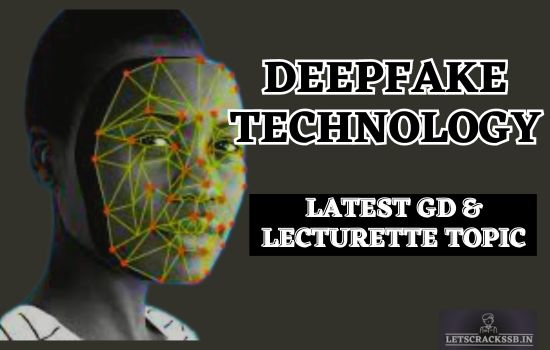Deepfake technology, a blend of “deep learning” and “fake,” has emerged as a significant force in the digital realm, giving rise to ethical, social, and security concerns. Over the years, deepfake capabilities have rapidly advanced, allowing for the creation of highly convincing synthetic media, including videos, audio recordings, and images that can deceive even the most discerning observers. This article aims to unravel the intricacies of deepfake technology by delving into its origins, underlying mechanisms, applications, implications, and ongoing efforts to address its challenges.
Understanding Deepfake Technology
Origins and Evolution
- The roots of deepfake technology trace back to the development of generative adversarial networks (GANs) in 2014, marking a significant breakthrough in artificial intelligence.
- GANs serve as the foundation for deepfake creation, involving two neural networks—the generator producing synthetic content and the discriminator evaluating its authenticity.
- The technology has evolved over time, incorporating advanced machine learning techniques such as deep neural networks, reinforcement learning, and natural language processing.
Mechanisms of Deepfake Creation
- Deepfake algorithms analyze extensive datasets to learn patterns, enabling the generation of realistic imitations of human expressions, speech, and behaviour.
- Key components like facial mapping, voice synthesis, and gesture replication allow deepfake creators to seamlessly manipulate visual and auditory elements.
- Deep learning models, including autoencoders and variational autoencoders, play a crucial role in encoding and reconstructing facial features, contributing to the realism of deepfake technology.
Applications of Deepfake Technology
Entertainment and Artistic Expression
- Deepfake technology has made its mark in the entertainment industry, offering filmmakers the ability to resurrect deceased actors or craft realistic digital avatars.
- Its application extends to dubbing and localization, providing seamless language adaptation in movies and television shows.
Political and Social Manipulation
- The rising concern with deepfake technology lies in its potential to manipulate political narratives, enabling the creation of fabricated speeches and interviews.
- Social media platforms have become battlegrounds for misinformation, where deepfakes can impersonate public figures and propagate false information.
Cybersecurity and Identity Theft
- Deepfakes present a considerable cybersecurity threat, as malicious actors can leverage them to impersonate individuals for financial fraud or corporate espionage.
- The technology’s adeptness at mimicking voices and facial expressions adds complexity to detecting and preventing identity theft.
Group Discussion for SSB Interview – Best Practise Set
Ethical and Societal Implications
Erosion of Trust and Truth
- The widespread dissemination of deepfake content undermines trust in visual and auditory evidence, adding complexity to the verification of information.
- Society grapples with the implications of living in a world where digital content cannot be taken at face value, fostering scepticism and uncertainty.
Privacy Concerns
- Deepfake technology raises profound privacy issues, exposing individuals to the creation of explicit or false content without their consent.
- The potential for unauthorized sharing of intimate content, character assassination, and the manipulation of personal narratives highlights the urgent need for robust privacy protections.
Legislative and Regulatory Challenges
- Governments across the globe are wrestling with the complex task of drafting legislation to curb the misuse of deepfake technology while preserving its legitimate applications.
- Striking a balance between safeguarding free speech and preventing malicious intent presents a substantial legislative challenge.
How Deepfake Technology Can Affect Politics
- The impact of deepfake technology on politics is substantial and cannot be overlooked.
- Deepfakes have the potential to erode trust in political leaders, institutions, and electoral systems. The dissemination of fake political content can manipulate public opinion, influence election outcomes, and introduce chaos into the political landscape.
- The ability to manipulate political speeches, alter candidates’ facial expressions, or fabricate interviews poses a significant threat to the integrity of democratic processes.
- Urgent action by governments and policymakers is imperative to address these concerns and safeguard the democratic process.
100+ Latest Lecturette Topics for SSB Interviews
Mitigating Deepfake Threats
Technological Solutions
- Researchers are actively developing advanced detection tools that harness artificial intelligence to pinpoint anomalies indicative of deepfake content.
- Exploring blockchain technology emerges as a potential solution for authenticating digital content and ensuring its integrity.
Media Literacy and Education
- Recognizing the existence and potential dangers of deepfake technology is paramount in empowering individuals to critically assess digital content.
- Educational initiatives emphasize the enhancement of media literacy, enabling the public to differentiate between authentic and manipulated media.
Collaboration and Industry Standards
- Collaborative endeavours involving technology companies, governments, and civil society are crucial for establishing industry standards and best practices for the responsible use of synthetic media.
- Promoting transparency in the development and deployment of deepfake technology stands as a key measure to mitigate associated risks.
Detecting and Combating Deepfake Content
- Addressing the escalating threat posed by deepfakes is now more crucial than ever. Researchers and technologists are actively developing various techniques, encompassing forensic analysis, and machine learning algorithms, and exploring the potential of blockchain technology.
- The collaboration among technology companies, government agencies, and civil society is imperative to establish robust detection mechanisms and encourage the responsible use of deepfake technology. Equally vital is public education about the existence and potential dangers of deepfakes, playing a pivotal role in mitigating the broader societal impact.
Most Popular Group Discussion Topics in SSB Interview
The Future Landscape of DeepFake Technology
- The trajectory of Deepfake technology remains uncertain, prompting both legitimate concerns about potential harm and recognition of promising applications in entertainment, education, and virtual reality. As technology evolves, so will the capabilities of Deepfake technology. Striking a balance between innovation and responsible use becomes imperative to harness its benefits while minimizing risks.
- Regulatory frameworks, ethical guidelines, and ongoing technological advancements will play a crucial role in shaping the future of Deepfake technology. Continuous research and development are essential to staying ahead of the curve, ensuring that society remains resilient in the face of emerging challenges.
Deepfake technology sits at the crossroads of technological innovation, ethical dilemmas, and societal influence. Its progression sparks contemplation about the essence of truth, the gradual erosion of trust, and the delicate equilibrium between pushing boundaries through innovation and the need for effective regulation. In facing the challenges posed by deepfakes, continual research, technological strides, and collective endeavours will be instrumental in shaping a future where synthetic realities are steered with responsibility and ethics at the forefront.
Must Read
- Best PPDT Practise Set | Repeatedly Asked PPDT Pictures with Sample Stories
- How to Prepare for a Lecturette in SSB Interview?
- 220+ Expected Lecturette Topics for SSB Interview Preparation
What is Deepfake technology?
Deepfake technology is an advanced form of artificial intelligence (AI) that uses deep learning algorithms to create highly realistic and often deceptive multimedia content, such as videos, audio recordings, or images, by superimposing or replacing existing elements.
What are the main applications of Deepfake technology?
Deepfake technology has various applications, including entertainment (creating digital avatars or resurrecting deceased actors), dubbing and localization in the film industry, political manipulation, social media misinformation, and potential threats to cybersecurity and identity.
How can one detect Deepfake content?
Detecting Deepfake content is challenging but researchers are developing advanced techniques. These may include forensic analysis, machine learning algorithms, and even exploring the use of blockchain technology for authentication.
What is the future outlook for Deepfake technology?
The future trajectory of Deepfake technology remains uncertain. While concerns about its potential harm exist, there are promising applications in entertainment, education, and virtual reality. Regulatory frameworks, ethical guidelines, and technological advancements will play crucial roles in shaping its future.
How can individuals protect themselves from Deepfake threats?
Individuals can protect themselves by being vigilant about the content they consume, verifying sources, and staying informed about the existence and potential dangers of Deep Fake technology. Additionally, supporting efforts for robust detection mechanisms and responsible technology use is essential.
Are there positive applications of Deep Fake technology?
While there are concerns, Deep Fake technology also holds promise for positive applications in entertainment, art, and education. It can be used creatively in filmmaking, virtual reality experiences, and other fields, provided it is used responsibly and ethically.


